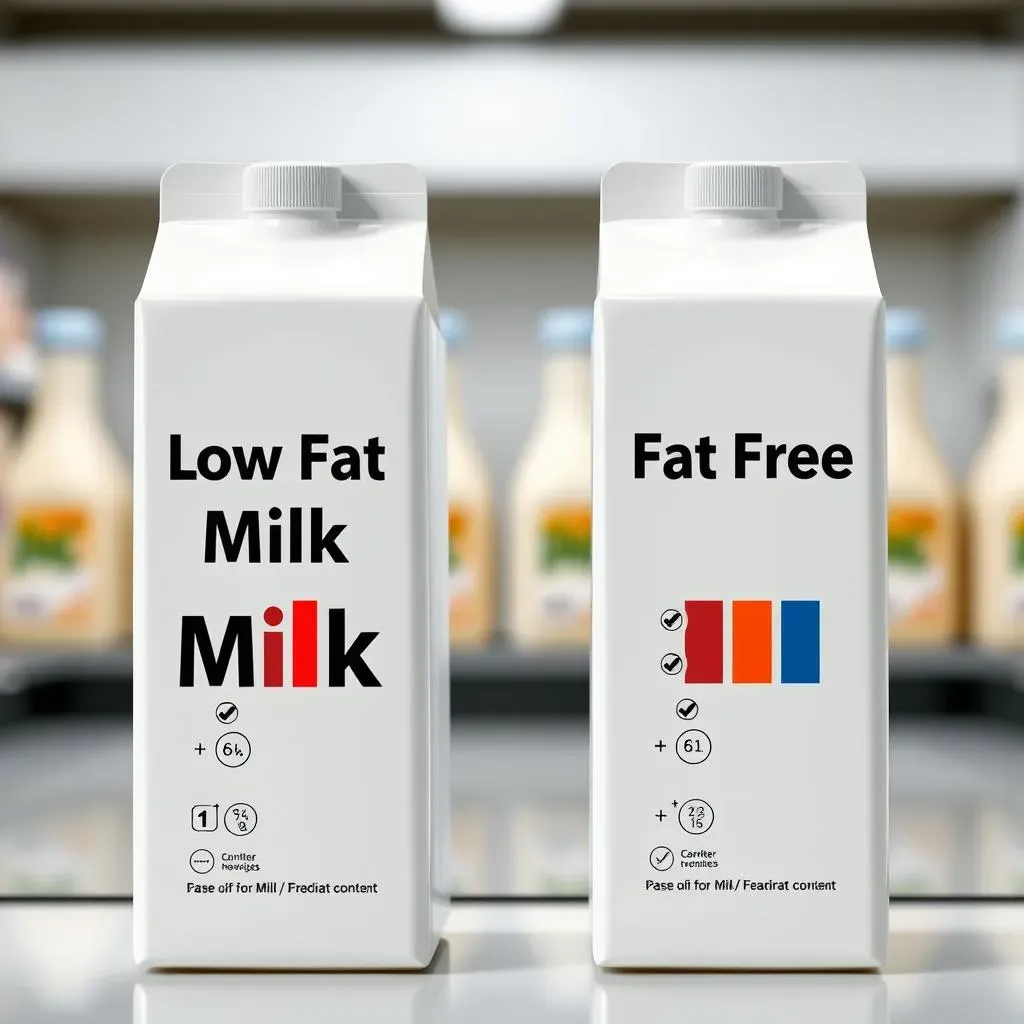Table of Contents
Ever stood in the dairy aisle, staring at cartons of milk, wondering what's the real deal with low fat milk vs fat free milk? You're not alone. It's a common question, and honestly, the answer isn't as simple as "one is good, the other is bad". We all know milk is packed with nutrients, but what happens when you start stripping away the fat? Does it make a big difference? This article will guide you through the key differences between these two types of milk. We'll look at how they stack up nutritionally, what they taste like, and how to decide which one best fits your needs. By the end, you'll be armed with the knowledge to confidently pick the right milk for your cereal, coffee, or just a good old-fashioned glass. So, let’s get into it and clear up the confusion once and for all.
The Skinny on Fat in Milk: Low Fat vs. Fat Free
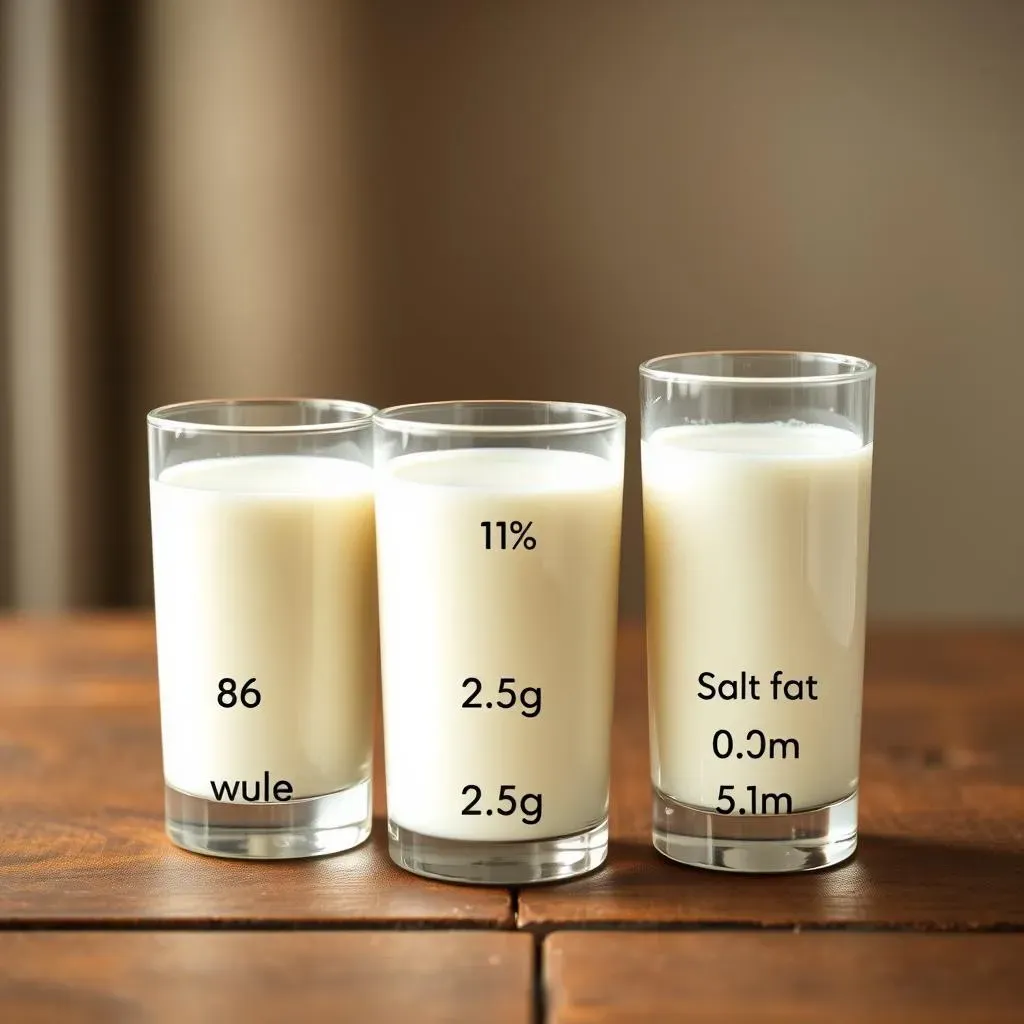
The Skinny on Fat in Milk: Low Fat vs. Fat Free
What's the Deal with Milk Fat?
Okay, so let's talk fat. When we say "low fat" milk, we're usually talking about 1% or 2% milk. This means that a small percentage of the milk's total volume is fat. On the other hand, "fat free" milk, also known as skim milk, has had almost all of the fat removed. Think of it like this: whole milk is the full package, with all the fat, while low fat and fat free milk have had some of that fat "skimmed" away. It’s like choosing between a regular burger and a lean one. Both are burgers, but one has less fat.
Now, why does this matter? Well, milk fat contributes to the creamy texture and rich flavor we often associate with milk. It also plays a role in how your body absorbs certain vitamins. But, it's also where a lot of the saturated fat comes from, which some people might want to limit in their diet. The big question becomes: are we losing out on anything by ditching the fat? It is not a simple yes or no question, it is more like a balancing act.
The Numbers Game: Fat Content Breakdown
To get a clearer picture, let’s look at the actual fat content. A cup of whole milk usually has around 8 grams of fat, with about 5 grams of that being saturated fat. Low fat milk, at 1%, will have around 2.5 grams of fat, with about 1.5 grams being saturated. And fat free milk? It clocks in at a mere 0.5 grams of fat, and barely any saturated fat. It's a significant difference, especially if you're keeping an eye on your fat intake. It is not just about the numbers, it is about your personal goals.
It's also good to remember that the fat in milk isn't the enemy some people make it out to be. It’s a source of energy and helps your body absorb certain vitamins. But, like with most things, it’s about balance. If you’re eating a balanced diet and don't have specific health concerns, the fat in milk might not be something you need to worry about too much. However, if you're watching your saturated fat intake, then making the switch to low fat or fat free could be a smart move.
Type of Milk | Total Fat (per cup) | Saturated Fat (per cup) |
|---|---|---|
Whole Milk | 8 grams | 5 grams |
Low Fat (1%) | 2.5 grams | 1.5 grams |
Fat Free (Skim) | 0.5 grams | 0 grams |
Nutritional Showdown: Comparing Vitamins and Minerals
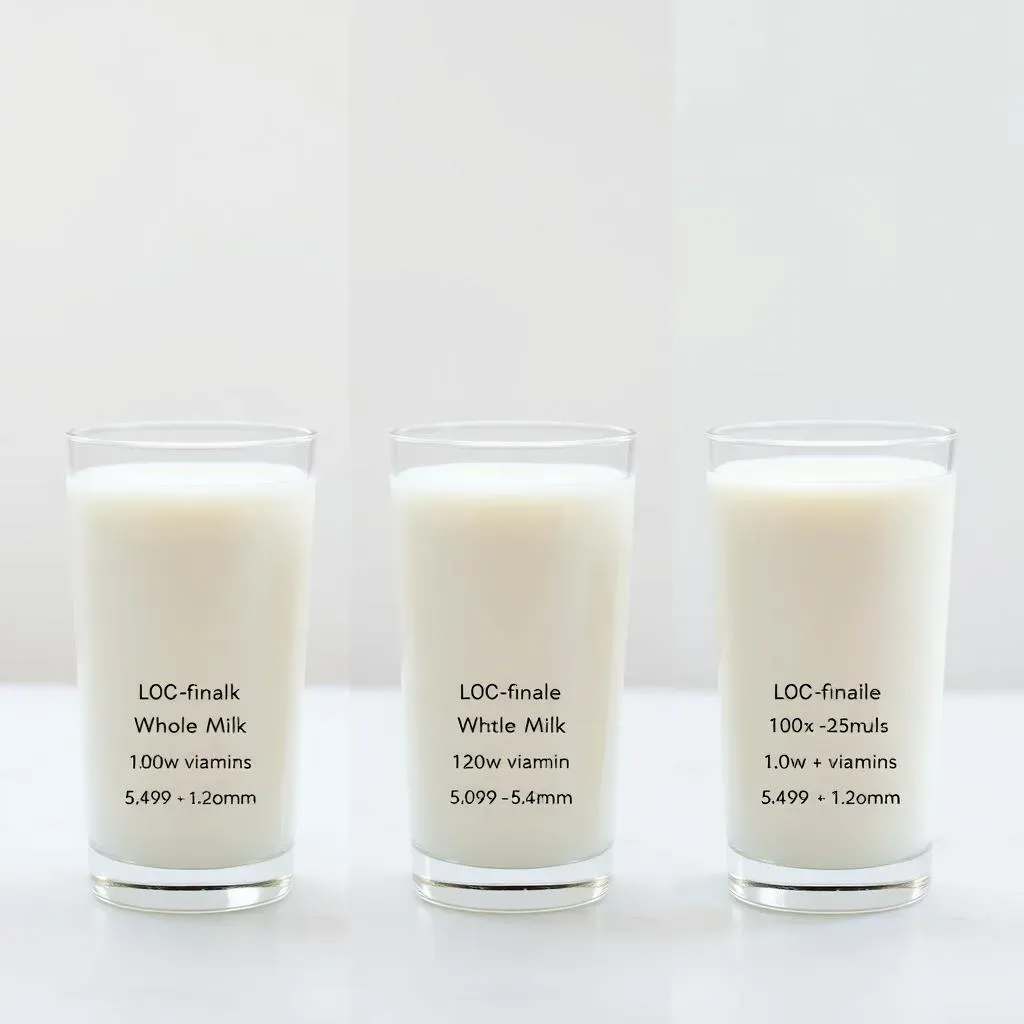
Nutritional Showdown: Comparing Vitamins and Minerals
The Core Nutrients: What Stays, What Goes?
Alright, let's get into the nitty-gritty of what happens to the good stuff when we reduce fat in milk. The great news is, whether you're grabbing low fat or fat free milk, you're still getting a solid dose of essential nutrients. We're talking about calcium, which is crucial for strong bones, and vitamin D, which helps your body absorb that calcium. You'll also find protein, which is essential for building and repairing tissues. These core nutrients don't get lost when fat is removed. It's not like they're tied to the fat and disappear with it. Think of it like this: the main characters in the milk movie stay the same, but some of the supporting cast change.
However, there are some differences. Fat-soluble vitamins, like vitamin A, are found in the fat portion of the milk. So, when you go for fat free milk, you might see a slight reduction in these. To make up for this, many milk producers will fortify low fat and fat free milk with vitamin A and D to ensure you're still getting the recommended amount. It's like a backup plan to make sure you're not missing out on the good stuff. So, while there might be a slight difference in the natural levels, the fortified versions often level the playing field.
Micronutrient Breakdown: A Closer Look
Now, let's zoom in a bit more. Beyond the big names like calcium and vitamin D, milk also contains other important micronutrients like riboflavin (vitamin B2), vitamin B12, and phosphorus. These play various roles in your body, from energy production to nerve function. The levels of these vitamins and minerals are generally similar across whole, low fat, and fat free milk. The main difference, again, comes down to the fat-soluble vitamins, with fat free milk often having lower levels of vitamin A unless it's been fortified. So, it's not like the fat is the sole carrier of all the good stuff. It's more like a bus that carries some, while other nutrients travel by other means.
It is also worth noting that the amount of protein remains relatively consistent across all types of milk. This is great news for anyone looking to get their protein fix, regardless of their fat preference. So, if you're choosing between low fat and fat free milk, you're not really losing out on the essential nutrients. It's more about what you prefer in terms of taste and fat content, and less about the nutrient content. The milk producers have made sure that you still get a lot of good stuff, no matter what type of milk you go with.
Nutrient | Whole Milk | Low Fat Milk | Fat Free Milk |
|---|---|---|---|
Calcium | 300mg | 300mg | 300mg |
Vitamin D | 124 IU | 124 IU | 124 IU |
Vitamin A | 395 IU | 500 IU (fortified) | 500 IU (fortified) |
Protein | 8g | 8g | 8g |
Taste Test: Can You Really Tell the Difference?
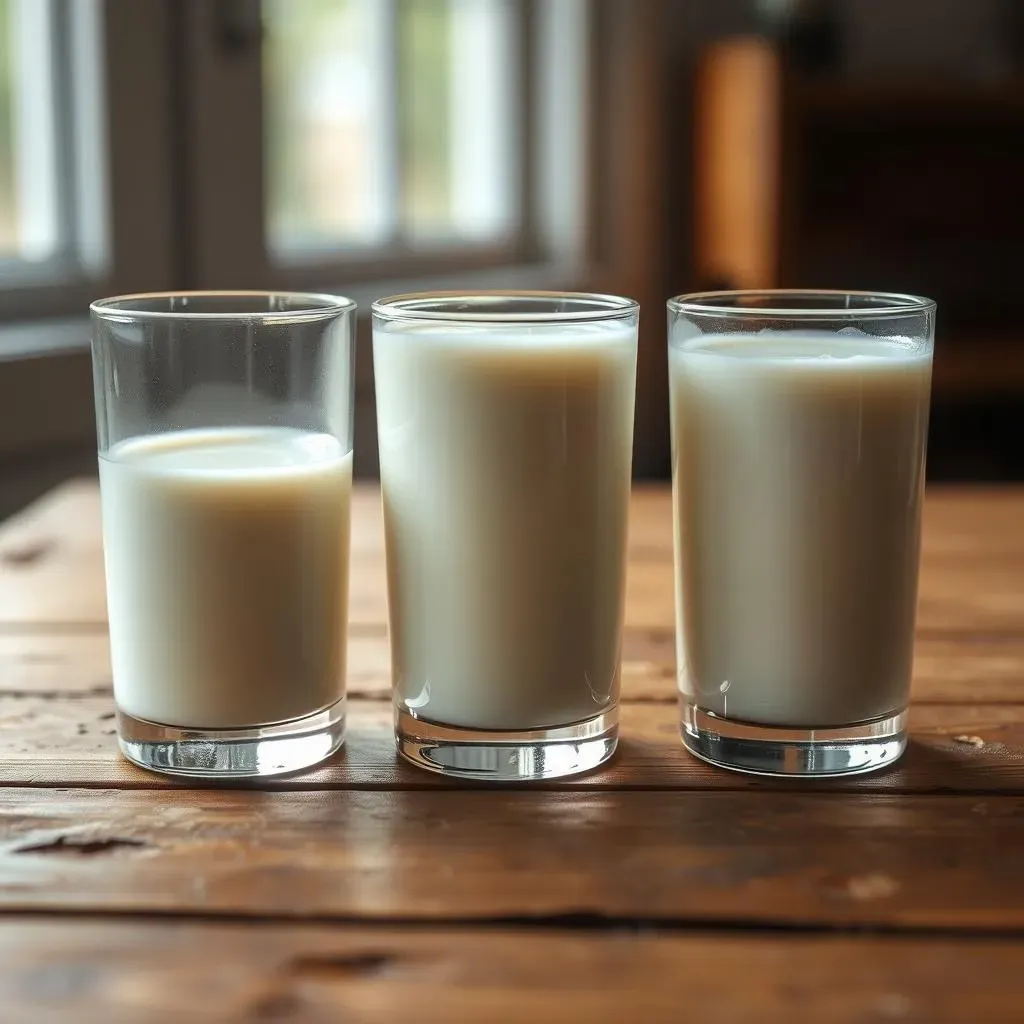
Taste Test: Can You Really Tell the Difference?
The Creaminess Factor: How Fat Affects Flavor
Alright, let's get down to the real question: does it actually taste different? The short answer is, yes, but it's not always a night-and-day difference. The fat content in milk plays a significant role in its texture and mouthfeel. Whole milk, with its higher fat content, has that rich, creamy texture that many people love. When you move to low fat milk, you'll notice it feels a bit lighter on the tongue. And fat free milk? Well, it can feel quite thin, almost watery, compared to its fattier counterparts. It’s like comparing a full-bodied wine to a light-bodied one, both are still wine, but they feel different in your mouth.
This difference in texture also impacts the overall flavor perception. Fat carries flavor compounds, so whole milk tends to have a richer, more pronounced milky taste. Low fat milk still retains some of that flavor, but it's less intense. Fat free milk, while still tasting like milk, often has a milder flavor, and some people even describe it as slightly sweeter. It’s not that the sugar content is higher, but the absence of fat can make the natural sweetness more noticeable. So, whether you prefer the richness of whole milk, the lightness of low fat, or the mildness of fat free, it all comes down to your individual taste preferences.
Blind Taste Tests: What Do People Actually Say?
Okay, so we know the science, but what do real people think? Numerous blind taste tests have been conducted, and the results are pretty interesting. Many people can easily distinguish between whole milk and fat free milk. The difference in texture is usually the biggest giveaway. However, when it comes to low fat milk versus fat free, the lines get a bit blurred. Some people can tell the difference, while others struggle to identify which is which. This suggests that the difference in taste between low fat and fat free milk is often subtle, and may not be noticeable to everyone. It’s kind of like trying to tell the difference between two shades of the same color, sometimes it is just hard.
Also, personal taste preferences and previous experiences with different types of milk can play a big role. If you've grown up drinking whole milk, you might find the transition to fat free milk a bit jarring. On the other hand, if you're used to the lightness of low fat or fat free, whole milk might feel too heavy. It's also worth noting that how you use the milk can influence your taste perception. For example, in a creamy latte, the subtle differences between low fat and fat free might be completely masked by the coffee and other ingredients. It is all about what you are used to and what you are using it for.
Type of Milk | Texture | Flavor |
|---|---|---|
Whole Milk | Rich, creamy | Full, pronounced milky taste |
Low Fat Milk | Lighter, less creamy | Milder milky taste |
Fat Free Milk | Thin, watery | Mild, slightly sweet taste |
The Bottom Line: It's a Matter of Preference
So, can you really tell the difference? Yes, there are subtle differences in taste and texture between whole, low fat, and fat free milk. However, whether those differences are significant enough to sway your preference is entirely up to you. Some people swear by the richness of whole milk, while others prefer the lightness of low fat or fat free. Ultimately, it's about what you enjoy and what fits your dietary needs and preferences. There's no right or wrong answer, it's all about what you like. It is like picking your favorite flavor of ice cream, everyone has their own preference.
Don't be afraid to do your own taste test and see which one you prefer. Grab a carton of each type of milk, pour them into separate glasses, and try them side by side. Pay attention to the texture, the flavor, and how they feel in your mouth. You might be surprised by which one you end up liking the most. It is like testing different types of coffee beans, and seeing which you enjoy more. The most important thing is to find what you like, and what works for you.
Making the Choice: Which Milk Should You Pour?
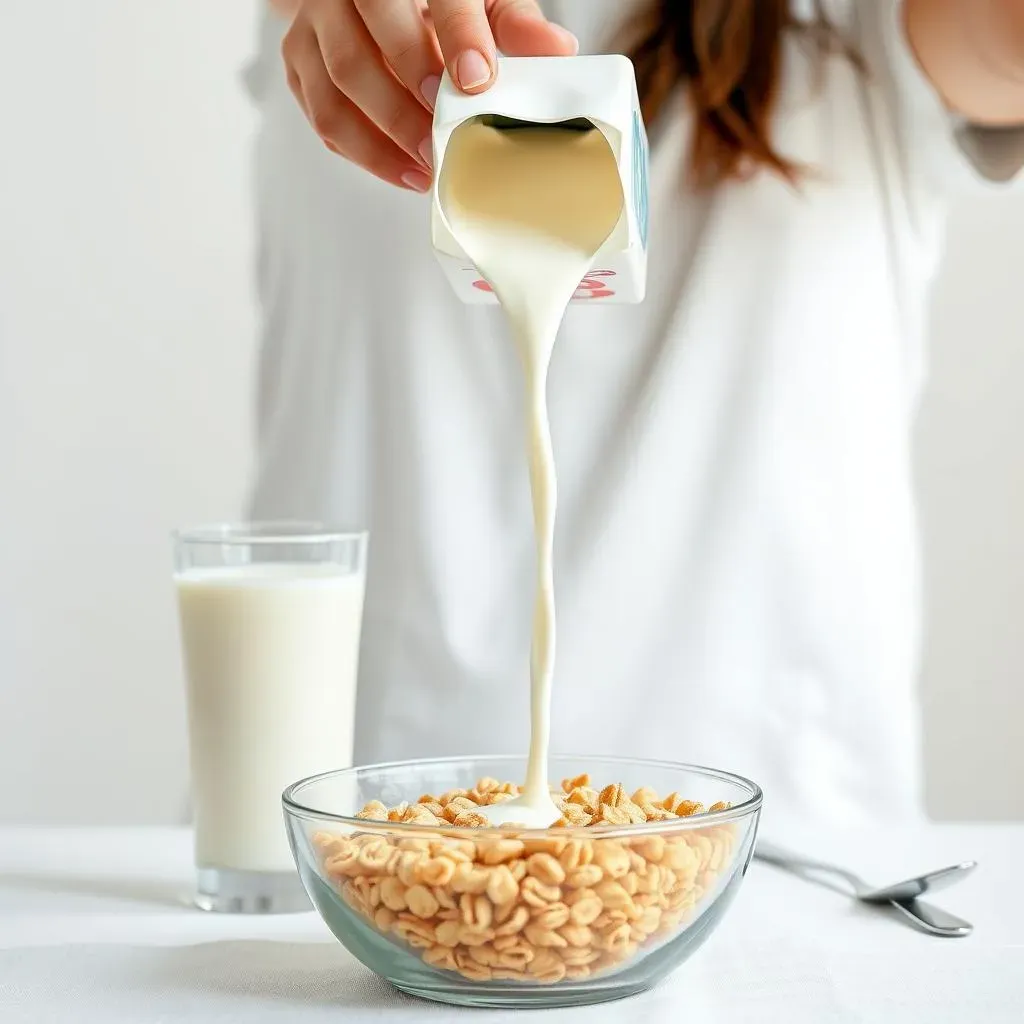
Making the Choice: Which Milk Should You Pour?
Considering Your Dietary Needs and Goals
Okay, so we've covered the fat, the nutrients, and the taste. Now, let's get to the heart of the matter: which milk should you actually choose? It really boils down to your individual dietary needs and health goals. If you're someone who's closely watching their saturated fat intake, perhaps due to heart health concerns, then low fat or fat free milk might be the better options. They offer the same essential nutrients as whole milk, but with significantly less saturated fat. It’s like choosing a bike over a car when you want to reduce your carbon footprint. Both get you from point A to point B, but one is more efficient and better for the environment, in this case, your body.
On the flip side, if you don't have any specific dietary restrictions and you enjoy the taste and texture of whole milk, there's no real reason to switch to a lower fat version. The fat in milk isn't inherently bad, and it can be part of a balanced diet. It’s all about moderation and making choices that align with your overall health and wellness goals. It's like choosing between a regular or diet soda, both are still sodas but one has less sugar. It really is about what is your goal.
Lifestyle and Usage: How Will You Use It?
Beyond dietary needs, think about how you typically use milk. Are you a cereal lover who pours a big bowl every morning? Or are you someone who uses a splash of milk in their coffee? If you're using a lot of milk, the lower fat options can help reduce your overall fat intake. On the other hand, if you're just using a small amount, the differences in fat content might not matter as much. It’s like choosing between a small cup of tea and a big mug of coffee. The amount you drink can impact the overall effect.
Also, consider how the milk's texture and flavor might impact your enjoyment. If you're making a creamy sauce or a rich dessert, whole milk might be your go-to. If you are just having a glass of milk, then the lighter version might be your preference. It's all about matching the milk to the task at hand. It is similar to choosing the right tool for a job, you wouldn't use a hammer for a screw, would you?
Consideration | Whole Milk | Low Fat Milk | Fat Free Milk |
|---|---|---|---|
Saturated Fat | Higher | Moderate | Very Low |
Taste & Texture | Rich, creamy | Lighter | Thin, mild |
Best For | Those without fat restrictions, creamy recipes | Those watching fat intake, general use | Those with strict fat limits, light use |
The Final Verdict: It's Your Choice
Ultimately, there's no single right answer when it comes to choosing between low fat milk vs fat free milk. It's a personal decision that should be based on your individual needs, preferences, and health goals. Both options provide essential nutrients, and the differences in taste are often subtle. Don't get caught up in the idea that one is "better" than the other. Instead, focus on making an informed choice that you feel good about. It is all about making the best choice for you, it is like choosing what to wear, what feels good for you.
So, next time you're in the dairy aisle, take a moment to consider what you've learned. Think about your dietary needs, your taste preferences, and how you plan to use the milk. And remember, it's okay to experiment and find what works best for you. It is all part of the journey of life, trying new things and finding what you enjoy. So, go ahead, pour yourself a glass of milk and enjoy it!
